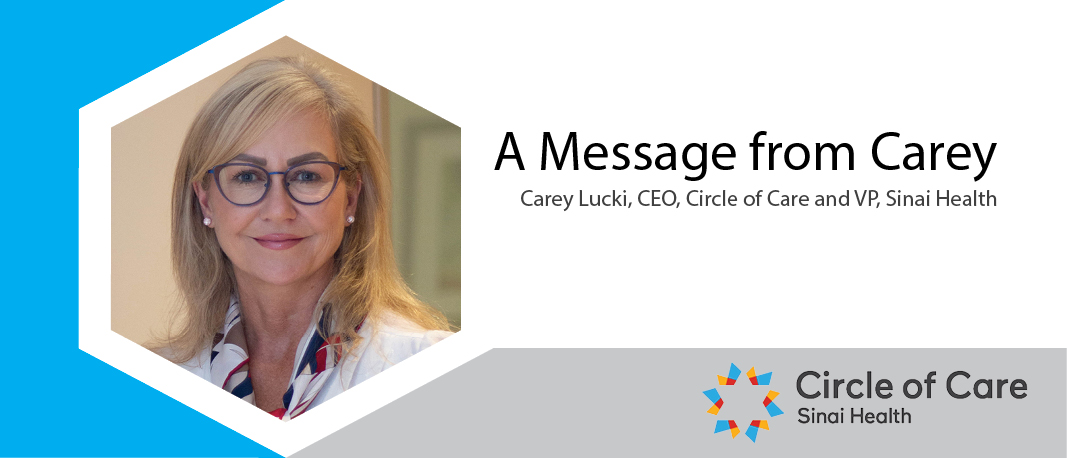
This month, in celebration of the National Volunteer Week taking place April 16 to 22, it is my pleasure to discuss Volunteering, which fuels much of the good work we do in our communities but which has faced significant changes since the onset of the pandemic.
Volunteerism, the Foundation of our Community Care
At Circle of Care, over 400 volunteers form the backbone of several of our signature programs, including Meals on Wheels, friendly visiting for seniors, and hospice and bereavement support. These programs combat isolation and food insecurity among ageing adults, helping them live longer in their homes, where most of them want to be.
Studies have repeatedly shown these types of interactions lead to improved health outcomes but what many don’t mention is that these benefits go beyond those to clients only. A 2018 paper on volunteering, published in BMC Public Health, suggests this type of activity is highly indicative of better mental and physical health, self-esteem, and happiness for volunteers themselves.
In short, volunteering is a win-win situation, with positive outcomes to clients, volunteers, communities, our healthcare system – and even our economy (a 2018 report by the Conference Board of Canada estimated that volunteers’ contributions to the economy in 2017 were equivalent to $55.9 billion).

Impacts of the Pandemic
Yet, volunteerism has faced major challenges in the last few years, with numbers decreasing significantly due to the pandemic. Statistics Canada reports that 52 per cent of Canadians volunteered in some capacity in 2018, with this number dropping to 9 per cent in 2020 and 17 per cent in 2021.
While it is expected that these numbers will improve, there is a long way to go to make it back to pre-pandemic levels. Many of the 60+ cohort, who formed a big part of our volunteer force, are still hesitant to return to public engagements, while research shows that younger demographics prefer more flexible and short-term volunteering opportunities.
We urgently need to find new ways to attract and retain volunteers if we are to ensure we have robust community programs to support an increasing number of ageing adults in our society.
Opportunities on the Horizon
The good news is that volunteerism, if positioned the right way, can be particularly resonant with people in the post-pandemic reality.
Many have come out of the pandemic with more mental health struggles and a sense of social isolation; many are still working from home and have fewer social interactions that before. With its clear benefits to the giver as well as the receiver, volunteering should be rightfully promoted as an opportunity to improve one’s wellbeing and form revitalizing social connections.
There is also the fact that the pandemic has made virtual forms of communication more prevalent. Finding ways to incorporate virtual options into volunteer-driven programs is something we should most definitely focus on. For example, for clients who had little to no technology or internet, Circle of Care delivered customized electronic tablets with internet that could be used to connect with others, play games, and attend virtual programs. We galvanized younger volunteers to help participating seniors use them with success and run some of our intergenerational, volunteer-driven programs virtually.
Finally, hybrid work arrangements, which decrease the frequency of commuting, have given many working people more time during the day – we should explore how we can best appeal to them to use some of their increased flexibility to volunteer, virtually or in-person.
As we take time to celebrate volunteers who devote themselves to making a real impact in their communities, let’s also keep connecting with our industry and community partners to share and discuss information so we can ensure volunteerism has a strong, healthy future.
Sincerely,
Carey Lucki
Chief Executive Officer, Circle of Care


